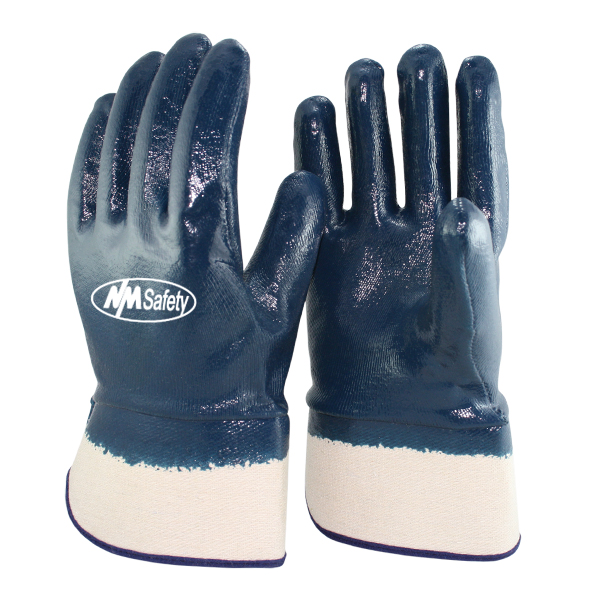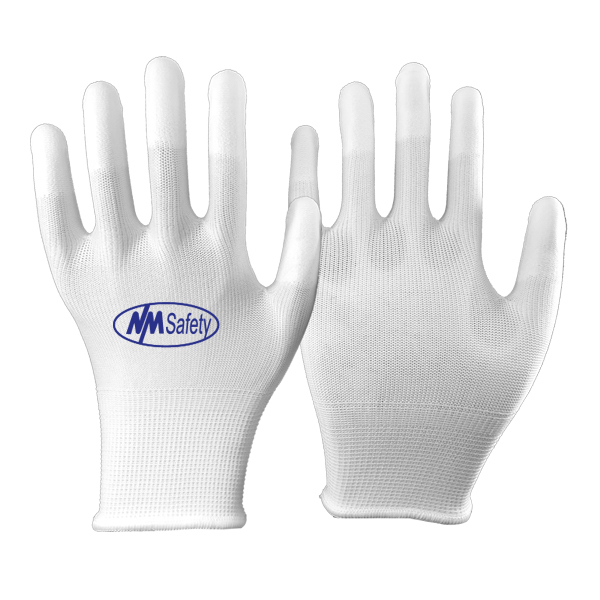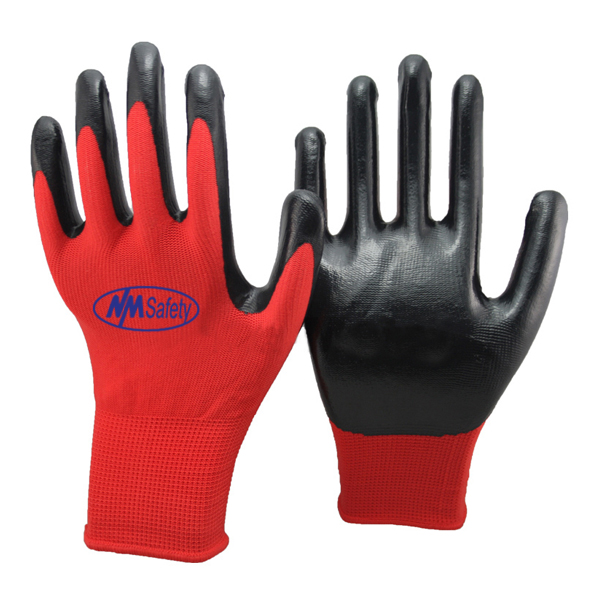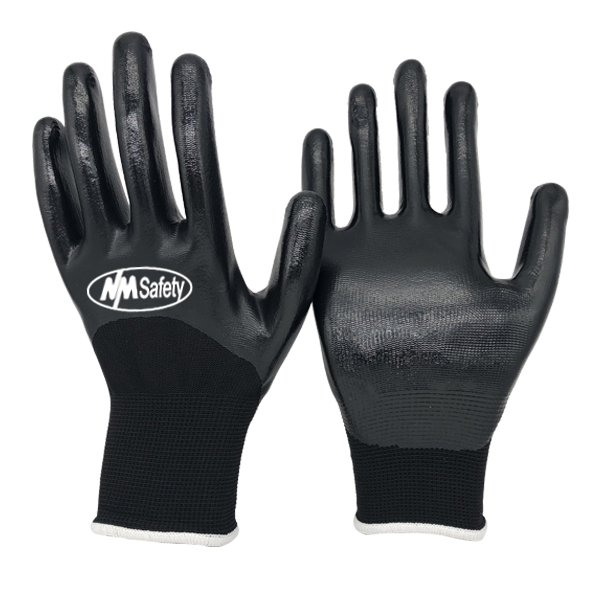What is Cut Resistance? Is It Really A Concern?
Cut resistance is the inclination to shun scratches, puncture wounds, and other hand injuries associated with extended contact with sharp equipment. Employees who work in industries that require them to come into contact with glass, metallurgy, or other sharp-edged materials are particularly vulnerable. Knife cuts and injuries are common in the butcher industry, so if you work as a butcher and frequently handle knives, you're in danger. To lower the risk of being cut to a particular level, cut-resistant gloves should be used. While no glove can protect you from being cut 100%, you can considerably reduce your chances of being cut. NMSafety is now one of the best cut-resistant glove producers, with significantly better cut protection than the competition.
Cut Resistant 5/A3/C Sandy Nitrile Coated Gloves:
This serves to protect the user's fingertips and palms against cuts that are common in areas including assembly, warehousing, and automobile maintenance. That is, on a very small scale. Because they are composed of sandy nitrile, which is oil-proof and ideal for most situations, these gloves offer the best grip of all.
Considerable Qualities This Cut Resistant 5/A3/C Sandy Nitrile Coated Gloves Possesses:
A3 ANSI Cut Level: A3 is a moderate threat mitigation cut level (1000-1499 grams to cut).
Nylon & HPPE Knitted Liner With Glass Fiber Knitted Liner: HPPE produces a lighter, more ventilated, more versatile glove that also helps to avoid cuts and tears. While the nylon and fiberglass in the lining composition are unaffected by humidity, Nitrex 244 is ideal for food preparation, manufacturing, and packing.
13-Gauge Thickness: Gloves with a gauge of 13 and higher are considered very dexterous, as the gauge thickness increases, the glove becomes thinner. We've placed them together because the thread thickness is less noticeable in this category. Gloves with a gauge of 13 or higher are considered highly dexterous, because the higher the gauge, the thinner the glove.
Sandy nitrile Coating: Sandy nitrile is well-known for its excellent wear resistance. In contrast to all other nitrile coatings, it is also more stretchy and contour-fitted. It's great in sticky conditions and even better in damp areas.
Keys To Find Best Anti Cut Gloves:
Cut Level:
If your job requires protection from flames, scrapes, fluids, and other hazards, the cut level is an important consideration when purchasing gloves.
Fitting:
Your PPE should fit rightly according to the contour of your hand. The anti-cut gloves should be made of flexible material to make them adjustable enough that they should adopt the exact shape of your hand.
Prefer Sandy Nitrile Coatings For Dexterity And Longevity:
Specific material handling jobs frequently necessitate coated materials, which make gloves an ideal PPE tool. In this regard, sandy nitrile is anti-slip and boosts glove durability by 10 times over uncoated gloves, allowing you to complete your tasks accurately.
Anti-Slip Grip:
To make them oil-proof, their palms are coated with sandy nitrile which makes them perfect to get protection against abrasions while improving their durability, longevity, and grip.
How Cut Resistant 5/A3/C Sandy Nitrile Coated Gloves Tackle Certain Hazards?
Here are some types of resistance they have against the below-mentioned hazards. Check if you’re the one who needs it.
Assembly:
The major purpose of nitrile-coated cut gloves is to offer technical workers the best grip possible. Elevating greasy materials is a regular part of the job, so it's vital that their hands are protected with an outer layer so they can maintain a tight grip on the items they're handling.
Grease Resistance:
These are regularly used in the auto industry and are designed to sustain the workload that these individuals perform. As a result, you can rely on these gloves to keep your hands clean and protected from oil and chemicals.
Puncture Protection:
These confirm that the coverage they offer against cuts, bruises, puncture wounds, and other hazards will not impact your ability to work. Anti-cut gloves are required while working with catheter tools and huge windows. These could save your life and prevent you from getting into risky situations. Shattered glass tainted with hazardous chemicals, fluids, or infectious substances that penetrate the skin through a cut or puncture can be harmful to one's health.
Resistance To Water:
Sandy nitrile is impervious to a wide broad spectrum of products, liquids, and chemicals, making it waterproof, mechanical fluid-resistant, and oil-resistant. The nitrile protects the wearer's hands against germs and keeps them from harming everything they come into contact with.
Some Of Our Top Picks:
Cut Resistant 5/A3/C Foam Nitrile Coated Gloves:
These contain 13 gauge nylon & HPPE & Steel fiber knitted liner as knitted material going to keep you comfortable while HPPE and steel fibers are ideal to offer protection against cut and impact. Anti-vibration padding is also required.
Impact Resistant & Cut Resistant Gloves:
These gloves are made up of knitted liner containing 18 gauge nylon HPPE and steel fiber as it is the right material that someone is needed while performing lighter-heavy work. Though they are not heavy-duty gloves they have a lightweight TRP padding on their back that helps the users to perform the work without feeling any load while keeping them safe from pinch or bruises to lacerations hazards.
End:
A small bit of prevention is preferable to a pound of cure. Because hand protection is obligatory, you should consider these nitrile-coated cut gloves an essential PPE routine and have them in your backpack among other meals or medicine. If you want to have a good time when shopping for gloves, go with NMSafety because they are the most authentic and trustworthy vendor.






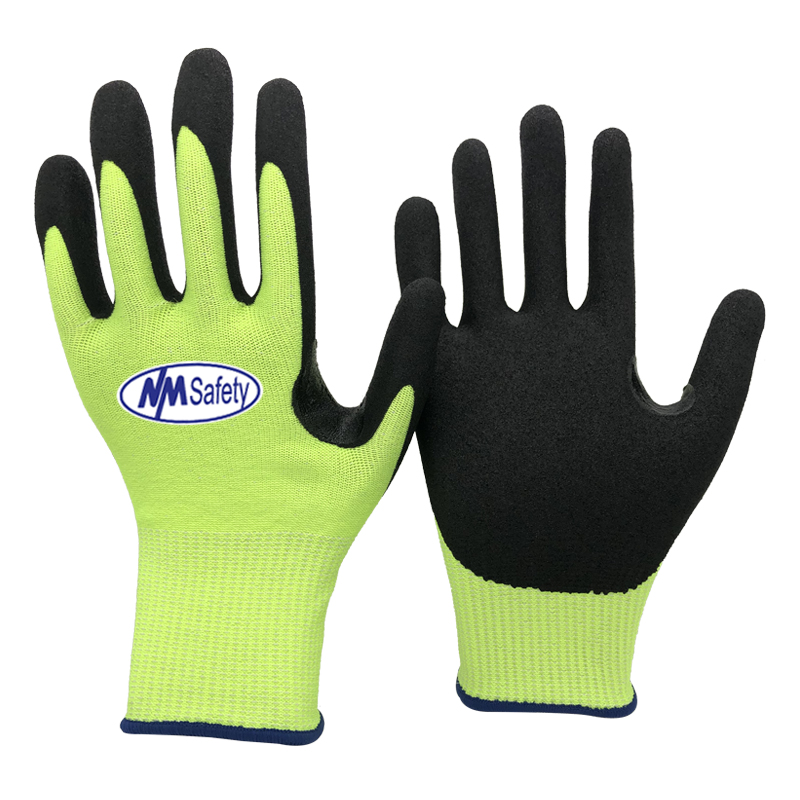
![Cut-Resistant-5-A3-C-Sandy-Nitrile-Coated-Gloves-Thumb-Reinforce-[DY1350F-H3]](https://www.nmsafety.com/wp-content/uploads/2024/04/Cut-Resistant-5-A3-C-Sandy-Nitrile-Coated-Gloves-Thumb-Reinforce-DY1350F-H3.jpg)
